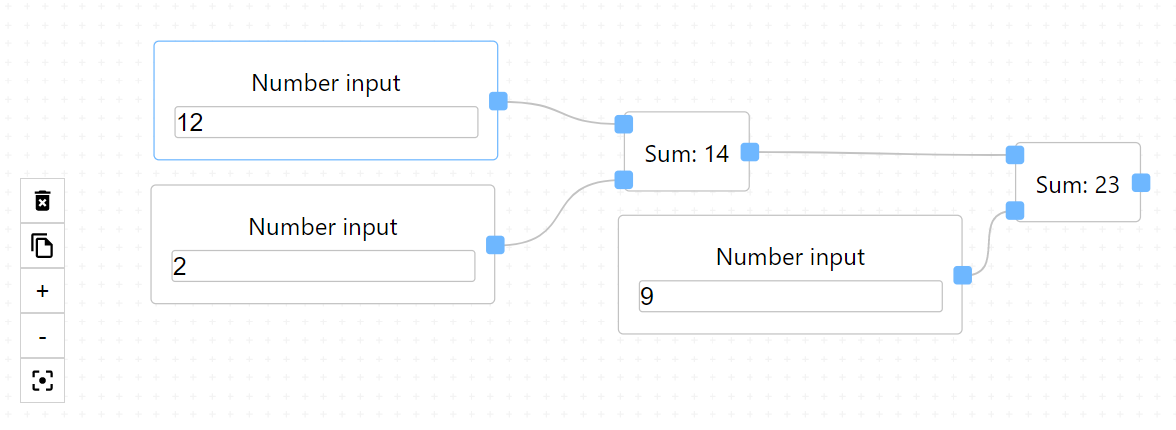react-easy-diagram
v0.11.3
Published
<img src="https://github.com/tokarchyn/react-easy-diagram/blob/main/repo/logo-with-name.png?raw=true" alt="React Easy Diagram logo" height="50">
Downloads
776
Maintainers
Readme
Open source library to build highly customizable interactive React diagrams with easy.

- Website: https://tokarchyn.github.io/react-easy-diagram
- Repository: https://github.com/tokarchyn/react-easy-diagram
- Live playground in Codesandbox: https://codesandbox.io/s/react-easy-diagram-basic-kki8o
Features
- Customization - The library was designed from the ground up to be easily customizable so you can change any component you like or customize existing ones.
- HTML nodes - Nodes are represented as
HTML, so you can define them at any level of complexity. (Because of this, if expected nodes number exceeds hundreds of them then it is better to use libraries with other approaches, for example diagrams that use Canvas) - Advanced API - Entire diagram state with all its methods and types are available so you are aware about everything that is going on in library and can manipulate the state as you want.
- Performance - Thanks to
MobXall components are rerendered only when it strictly needed. - Touch devices support - User interaction is implemented with helps of
UseGesturelibrary that enables you to use diagrams not only on PC but also on touch devices, use pinch & zoom gesture.
Roadmap
There are several top priority things right now:
- Add link's label.
- Add callbacks for better control over the library.
- Test code as much as possible.
- Prepare repository for contribution by other developers (issues templates, commit messages template, discussion section).
Installation
Using npm:
npm install react-easy-diagramUsing yarn:
yarn add react-easy-diagramGetting started
There are three main entities in library: node, port, link.
To create diagram import Diagram:
import { Diagram } from "react-easy-diagram";Pass it to the rendering function and provide state and settings as a props, for example:
const YourDiagram = () => (
<Diagram initState={{
nodes: [
{
id: "node_1",
position: [300, 300],
type: "output_horizontal" // there are other built-in types, such as input_output_horizontal, input_output_vertical, input_vertical, input_horizontal, output_vertical, star. You can also provide your own types in settings.
},
{
id: "node_2",
position: [520, 400],
type: "input_horizontal"
},
],
links: [
{
source: {
nodeId: "node_1",
portId: "output"
},
target: {
nodeId: "node_2",
portId: "input"
}
},
]
}} />
);